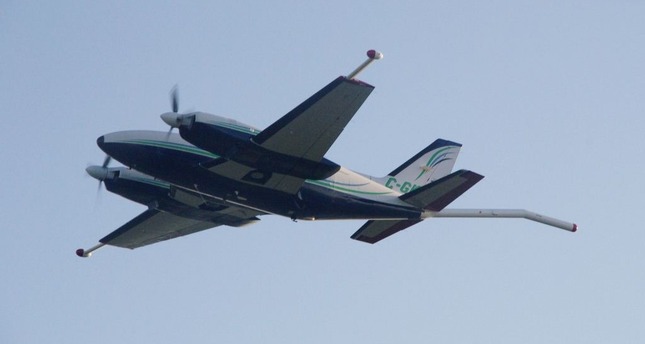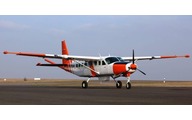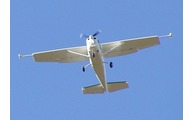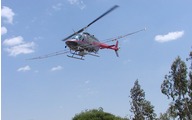
Magnetic Gradiometry

The measurement of gradients of the earth's magnetic field from an airborne platform has been advocated for many years. In 1954 Wickerham proposed the use of what is essentially a gradient along the flight direction (longitudinal gradient). Hood's suggestion in 1965 was to measure the vertical gradient using a total-field magnetometer mounted in a tail stinger and a second magnetometer in a towed bird below the tail stinger. In fact, the system finally built by Hood's group at the Geological Survey of Canada used two tail stingers separated by 2 m. The advantages of this type of total-field vertical gradiometry were advocated so convincingly that vertical gradiometers for aircraft surveying became a standard.
Subsequent installations generally measured a vertical gradient and a transverse gradient (perpendicular to the flight direction). The longitudinal gradient is either calculated by taking the spatial derivative of a single sensor traverse, or by averaging two wing tip sensors and subtracting this from a tail sensor. Marcotte et al. (1992) give a number of examples where having both horizontal gradients can help in the interpretation of magnetic data. They suggest that both gradients can be used to:
- determine whether the geology is two-dimensional
- estimate the strike direction, and
- help calculate the vertical gradient
Interestingly, Marcotte et al. demonstrate that the vertical gradient derived from the horizontal gradients gives data with noise levels one tenth of that seen on the measured vertical gradients.
The advantages of magnetic gradient surveys, both vertical and horizontal, include:
- Better resolution of shallow features and closely spaced sources
- Better definition of structural features
- Suppression of regional anomalies due to deep sources
- Mapping of sub-vertical contacts
- Tighter anomalies around compact sources
- Easier detection and delineation of pipe-like sources
- Common mode rejection of geomagnetic variations
- Relative insensitivity to rotation noise
- Less importance of IGRF corrections (usually unnecessary)
- Direct indication of Euler structural index when combined with measurements of field
- Higher resolution than conventional total magnetic intensity surveys - can be offset against survey height, allowing somewhat higher, therefore considerably safer, flying
Additional advantages of horizontal magnetic gradiometers:
- Constraining of local strike direction
- Constraining of interpolation between flight lines (important as all surveys are somewhat aliased across flight lines)
- Provides more geometric information than a total field magnetometer
- More sensitive to smaller bodies and targets to one side of the flight line, resulting in better definition of a body that has only two flight lines crossing it
In Summary
Gradiometer surveys can acquire very detailed, high-resolution data by flying at low altitudes and moderate speeds.
A vertical magnetic gradiometer is better at detecting near surface magnetic sources than a total-field magnetometer, making the gradient method ideal for mineral prospecting.
A horizontal gradiometer also provides detailed near-surface information, but it also interpolates data between survey flight lines, which is important if the survey target has similar dimensions to the survey line spacing.
Both vertical and horizontal gradiometers are much less affected by diurnal changes in the magnetic field than is a total-field magnetometer, so they are particularly well-suited for use in those parts of the world where significant diurnal activity may be expected.
 |
 |
 |
| Three cesium magnetometer horizontal gradiometer system installed on a Piper PA-31 Navajo aircraft in wingtip pods and a tail-boom (stinger). | Three cesium magnetometer horizontal gradiometer system installed on a Cessna C208B Grand Caravan aircraft in wingtip pods and a tail-boom (stinger). | Two cesium magnetometer horizontal gradiometer system installed on a Cessna C206 aircraft in wingtip pods. |
 |
||
| Two cesium magnetometer horizontal gradiometer system installed on a rigid-boom mounted on a Bell 206L3 Jet Ranger helicopter. |